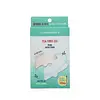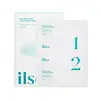What's inside
What's inside
 Key Ingredients
Key Ingredients

 Benefits
Benefits

 Concerns
Concerns

 Ingredients Side-by-side
Ingredients Side-by-side

Water
Skin Conditioning1,2-Hexanediol
Skin ConditioningGanoderma Lucidum Extract
Skin ProtectingGlycerin
HumectantCodonopsis Lanceolata Root Extract
Skin ConditioningSalix Alba Bark Extract
AstringentArctium Lappa Root Extract
Skin ConditioningChrysanthemum Sinense Flower Extract
CleansingMelaleuca Alternifolia Leaf Extract
PerfumingButylene Glycol
HumectantViscum Album Leaf Extract
SoothingHamamelis Virginiana Extract
AntiseborrhoeicHydrogenated Lecithin
EmulsifyingPolyglyceryl-10 Oleate
Skin ConditioningLavandula Angustifolia Extract
Skin ConditioningPhytosterols
Skin ConditioningMelaleuca Alternifolia Leaf Water
AntimicrobialCentella Asiatica Extract
CleansingEthylhexylglycerin
Skin ConditioningIllicium Verum Fruit Extract
PerfumingLavandula Angustifolia Oil
MaskingPanthenol
Skin ConditioningMelaleuca Alternifolia Flower/Leaf/Stem Extract
Skin ConditioningScutellaria Baicalensis Root Extract
AstringentMelaleuca Alternifolia Leaf Oil
AntioxidantBetaine
HumectantDipropylene Glycol
HumectantPentylene Glycol
Skin ConditioningHydroxyacetophenone
AntioxidantPinus Sylvestris Leaf Extract
TonicXanthan Gum
EmulsifyingCaprylyl Glycol
EmollientSodium Gluconate
Skin ConditioningCitric Acid
BufferingDipotassium Glycyrrhizate
HumectantSodium Citrate
BufferingWater, 1,2-Hexanediol, Ganoderma Lucidum Extract, Glycerin, Codonopsis Lanceolata Root Extract, Salix Alba Bark Extract, Arctium Lappa Root Extract, Chrysanthemum Sinense Flower Extract, Melaleuca Alternifolia Leaf Extract, Butylene Glycol, Viscum Album Leaf Extract, Hamamelis Virginiana Extract, Hydrogenated Lecithin, Polyglyceryl-10 Oleate, Lavandula Angustifolia Extract, Phytosterols, Melaleuca Alternifolia Leaf Water, Centella Asiatica Extract, Ethylhexylglycerin, Illicium Verum Fruit Extract, Lavandula Angustifolia Oil, Panthenol, Melaleuca Alternifolia Flower/Leaf/Stem Extract, Scutellaria Baicalensis Root Extract, Melaleuca Alternifolia Leaf Oil, Betaine, Dipropylene Glycol, Pentylene Glycol, Hydroxyacetophenone, Pinus Sylvestris Leaf Extract, Xanthan Gum, Caprylyl Glycol, Sodium Gluconate, Citric Acid, Dipotassium Glycyrrhizate, Sodium Citrate
Water
Skin ConditioningGlycerin
HumectantEthyl Hexanediol
SolventButylene Glycol
HumectantOak Root Extract
Skin ConditioningChrysanthemum Sinense Flower Extract
CleansingUlmus Davidiana Root Extract
Skin ConditioningHamamelis Virginiana Leaf Extract
Skin ConditioningVaccinium Angustifolium Fruit Extract
Skin ProtectingMagnolia Kobus Branch/Flower/Leaf Extract
Skin ConditioningSalix Alba Bark Extract
AstringentSchisandra Chinensis Callus Extract
Skin Protecting1,2-Hexanediol
Skin ConditioningTuna Extract
Skin ConditioningHydrogenated Lecithin
EmulsifyingPEG-40 Hydrogenated Castor Oil
EmulsifyingPotassium Hydroxide
BufferingLinum Alpinum Flower/Leaf/Stem Extract
Skin ConditioningMentha Piperita Leaf Extract
Skin ConditioningPhytosterols
Skin ConditioningPortulaca Oleracea Extract
Skin ConditioningVaccinium Myrtillus Fruit Extract
Skin ConditioningMentha Piperita Oil
MaskingPanthenol
Skin ConditioningSaccharum Officinarum Extract
MoisturisingDipotassium Glycyrrhizate
HumectantCitrus Aurantium Dulcis Fruit Extract
MaskingCitrus Limon Fruit Extract
MaskingAcer Saccharum Extract
Skin ConditioningBetaine
HumectantSolanum Virginianum Extract
Skin ConditioningEel Extract
HumectantXanthan Gum
EmulsifyingIllicium Verum Fruit Extract
PerfumingGold
Cosmetic ColorantAesculus Hippocastanum Extract
AntioxidantCamellia Sinensis Leaf Extract
AntimicrobialSmilax China Bark Extract
Skin ConditioningCinnamomum Cassia Bark Extract
MaskingCananga Odorata Macrophylla Flower Extract
PerfumingWine Extract
AntioxidantEisenia Arborea Extract
Skin ConditioningPhenoxyethanol
PreservativeWater, Glycerin, Ethyl Hexanediol, Butylene Glycol, Oak Root Extract, Chrysanthemum Sinense Flower Extract, Ulmus Davidiana Root Extract, Hamamelis Virginiana Leaf Extract, Vaccinium Angustifolium Fruit Extract, Magnolia Kobus Branch/Flower/Leaf Extract, Salix Alba Bark Extract, Schisandra Chinensis Callus Extract, 1,2-Hexanediol, Tuna Extract, Hydrogenated Lecithin, PEG-40 Hydrogenated Castor Oil, Potassium Hydroxide, Linum Alpinum Flower/Leaf/Stem Extract, Mentha Piperita Leaf Extract, Phytosterols, Portulaca Oleracea Extract, Vaccinium Myrtillus Fruit Extract, Mentha Piperita Oil, Panthenol, Saccharum Officinarum Extract, Dipotassium Glycyrrhizate, Citrus Aurantium Dulcis Fruit Extract, Citrus Limon Fruit Extract, Acer Saccharum Extract, Betaine, Solanum Virginianum Extract, Eel Extract, Xanthan Gum, Illicium Verum Fruit Extract, Gold, Aesculus Hippocastanum Extract, Camellia Sinensis Leaf Extract, Smilax China Bark Extract, Cinnamomum Cassia Bark Extract, Cananga Odorata Macrophylla Flower Extract, Wine Extract, Eisenia Arborea Extract, Phenoxyethanol
 Reviews
Reviews

Ingredients Explained
These ingredients are found in both products.
Ingredients higher up in an ingredient list are typically present in a larger amount.
1,2-Hexanediol is a synthetic liquid and another multi-functional powerhouse.
It is a:
- Humectant, drawing moisture into the skin
- Emollient, helping to soften skin
- Solvent, dispersing and stabilizing formulas
- Preservative booster, enhancing the antimicrobial activity of other preservatives
Betaine is a common humectant (a substance that promotes retention of moisture). It's known to be gentle on the skin and can help balance hydration.
This ingredient is best for improving hydration and soothing irritated skin. Studies also show it helps even out skin tone.
Fun fact: Betaine is naturally created in the skin and body. The kind found within cosmetic products can be either plant-derived or synthetic.
Another name for betaine is trimethylglycine.
Learn more about BetaineButylene Glycol (or BG) is used within cosmetic products for a few different reasons:
Overall, Butylene Glycol is a safe and well-rounded ingredient that works well with other ingredients.
Though this ingredient works well with most skin types, some people with sensitive skin may experience a reaction such as allergic rashes, closed comedones, or itchiness.
Learn more about Butylene GlycolWe don't have a description for Chrysanthemum Sinense Flower Extract yet.
Dipotassium Glycyrrhizate comes from licorice root.
Extracts of licorice have demonstrated to have antibacterial, anti‐inflammatory, antiviral, antioxidant properties.
One component, glabridin, has extra potent antioxidant and soothing properties. It has also been found to block pigmentation from UVB rays in guinea pigs.
Licorice Root also contains a flavonoid. Flavonoids are a natural substance from in plants. Flavonoids also have antioxidant properties.
Another component, glycyrrhizin, has been found to have anti-inflammatory and antimicrobial benefits. This may make licorice root extract effective at treating acne. However, more research is needed to support this.
Liquiritin is one of the flavone compounds found in licorice. It has been found to help lighten skin by preventing tyrosinase from reacting with tyrosine. When the two react, protein is converted to melanin. Melanin is the substance in your body that gives your features pigmentation.
Licorice root is native to Southern Europe and Asia. It has been used in traditional Chinese medicine to help with respiratory issues.
Learn more about Dipotassium GlycyrrhizateGlycerin is already naturally found in your skin. It helps moisturize and protect your skin.
A study from 2016 found glycerin to be more effective as a humectant than AHAs and hyaluronic acid.
As a humectant, it helps the skin stay hydrated by pulling moisture to your skin. The low molecular weight of glycerin allows it to pull moisture into the deeper layers of your skin.
Hydrated skin improves your skin barrier; Your skin barrier helps protect against irritants and bacteria.
Glycerin has also been found to have antimicrobial and antiviral properties. Due to these properties, glycerin is often used in wound and burn treatments.
In cosmetics, glycerin is usually derived from plants such as soybean or palm. However, it can also be sourced from animals, such as tallow or animal fat.
This ingredient is organic, colorless, odorless, and non-toxic.
Glycerin is the name for this ingredient in American English. British English uses Glycerol/Glycerine.
Learn more about GlycerinHydrogenated Lecithin is created from the hydrogenation of lecithin (a group of phospholipids). Hydrogenation is a chemical reaction between hydrogen and another element.
This ingredient is an emollient and emulsifier. As an emollient, it helps soften skin by trapping moisture within. As an emulsifier, it prevents oil and water ingredients from separating.
Star anise extract is used to add a scent to a product. It has a similar smell to black licorice.
Panthenol is a common ingredient that helps hydrate and soothe the skin. It is found naturally in our skin and hair.
There are two forms of panthenol: D and L.
D-panthenol is also known as dexpanthenol. Most cosmetics use dexpanthenol or a mixture of D and L-panthenol.
Panthenol is famous due to its ability to go deeper into the skin's layers. Using this ingredient has numerous pros (and no cons):
Like hyaluronic acid, panthenol is a humectant. Humectants are able to bind and hold large amounts of water to keep skin hydrated.
This ingredient works well for wound healing. It works by increasing tissue in the wound and helps close open wounds.
Once oxidized, panthenol converts to pantothenic acid. Panthothenic acid is found in all living cells.
This ingredient is also referred to as pro-vitamin B5.
Learn more about PanthenolPhytosterols come from plants, nuts, and whole grains. These compounds have skin soothing and moisturizing properties.
Fun fact: They are similar to cholesterol and can help lower cholesterol levels.
Salix Alba Bark Extract comes from the white willow tree, which is native to Europe and Central Asia.
Salix Alba Bark Extract has often been described as salicylic acid's cousin. This is due to the salicin it contains. However, studies are limited showing salix alba bark to be an effective salicylic acid alternative.
Salicin does have anti-inflammatory and antioxidant properties. It has shown to decrease the formation of inflammatory mediators, such as tumor necrosis factor-α and nuclear factor-kappa B. Salicin also has a mildly exfoliating effect on the skin.
Several other components in salix alba bark extract also contain antioxidant properties, such as flavonoids and polyphenols. Antioxidants may help with anti-aging as they neutralize harmful free-radical molecules.
Willow Bark extract has been used for thousands of years. Ancient civilizations used white willow to help treat pain and fevers.
Learn more about Salix Alba Bark ExtractWater. It's the most common cosmetic ingredient of all. You'll usually see it at the top of ingredient lists, meaning that it makes up the largest part of the product.
So why is it so popular? Water most often acts as a solvent - this means that it helps dissolve other ingredients into the formulation.
You'll also recognize water as that liquid we all need to stay alive. If you see this, drink a glass of water. Stay hydrated!
Learn more about WaterXanthan gum is used as a stabilizer and thickener within cosmetic products. It helps give products a sticky, thick feeling - preventing them from being too runny.
On the technical side of things, xanthan gum is a polysaccharide - a combination consisting of multiple sugar molecules bonded together.
Xanthan gum is a pretty common and great ingredient. It is a natural, non-toxic, non-irritating ingredient that is also commonly used in food products.
Learn more about Xanthan Gum